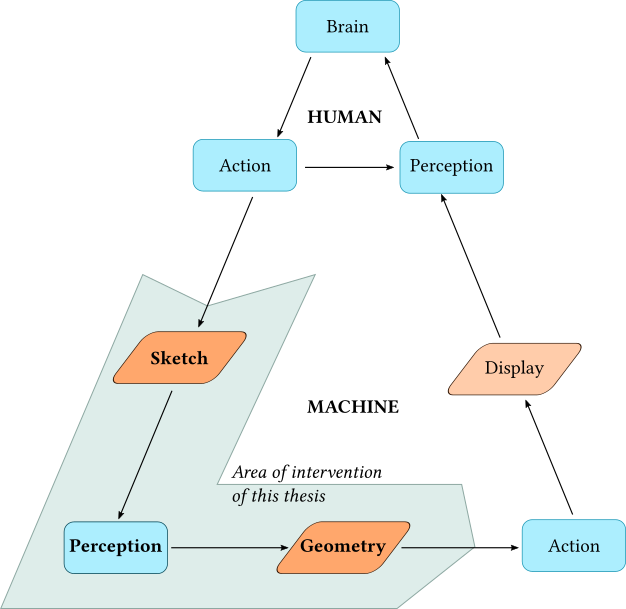Raghav B. Venkataramaiyer
Designer and Computer Scientist [AI/ML/CV/GR]

IIT Roorkee
IIT Kanpur
DelTA Lab
Bath Uni
CAMERA
Linkedin
Google Scholar
Table of Contents
About
I am a computer vision/ graphics scientist presently with the University of Bath, who transitioned from being a practising architect in India.
My career as a practising architect made me realise a gap in the creator-oriented software. The industry workflow was wanting for a sketch recognition tool. A quick survey found resonance with four out of every five participants. Then I dived into the research sphere, to investigate the problem of “Understanding geometry from sketches.” Potentially, this tool can transform the time to market for multiple industries. For example, in contrast to the classic method beholding multiple steps of digital transformation from drawing to publishing, SHAD3S tool off the shelf allows a digital artist to potentially publish to digital billboards in real-time as (s)he draws.
Presently, at the University of Bath, my research aims at improving facial expression synthesis. I am implementing a transformation from the OpenGL pipeline to neural-rendering pipeline. This opens up the pool of users by eliminating the additional requirement of technical skill and/or vendor-specific experience. The project being centred around experimental psychologists for downstream use, has allowed for a rich user-feedback to improve upon the product.
[ Top ]
Research
Can I teach a robot to replicate a line art?
(Project Page) (PDF) (arXiv)

Figure 1: Left to Right. An artist drawing; digital copy of the drawing; segmented version; drawing by a CNC plotter.
A robot learns to look at a sketch (line-art) and redraws it using a pen. Read more …
[ Top ]
SHAD3S: A model for sketch, shade and shadow
(Project Page) (PDF) (arXiv) (code) (data) (trained models)

Figure 2: SHAD3S : a Model for Sketch, Shade and Shadow — is a completion framework that provides realistic hatching for an input line drawn sketch that is consistent with the underlying 3D and a user specified illumination. The figure above shows choice of illumination conditions on the top row, user sketches in the middle row, and the completion suggestions by our system. Note that the wide variety of shapes drawn by the user, as well as the wide varied to brush styles used by the user were not available in the training set.
AI plugs-into an image manipulation software (like Photoshop) to complete your hand-drawn sketch with lightning information as you desire. Read more …
[ Top ]
Emogen IO
Contribution. Efficient decision on feasibility of generated facial expressions.
Research in-progress
Facex GA
(at CAMERA UK since May ’22)
Neural renderer to synthesise facial-expressions, with disentangled parametric control over identity, expressions and their intensities. Comparing methods with a) diffusion; b) vanilla StyleGAN; c) GAN's with access to parametric 3D information; and d) human as the oracle.
[ Top ]
Exploratory Research
Cutting-stock Problem
Behaviour of Cutting-stock over a spectrum of procedurally generated data.
Parametric 3D Human body/face models
- Face models
- Discriminative information in parametric face models BFM and FLAME, wrt. facial expressions;
- Human Skeleton Models
- Procedural generation of human skeleton sketches using SIMPL.
Ph.D. Thesis
(Read more) (PDF) (PDF-compressed) (arXiv)

Figure 3: The feedback loop of sketching as an exercise.
Sketching is used as a ubiquitous tool of expression by novices and experts alike. In this thesis I explore two methods that help a system provide a geometric machine-understanding of sketches, and in-turn help a user accomplish a downstream task.
[ Top ]